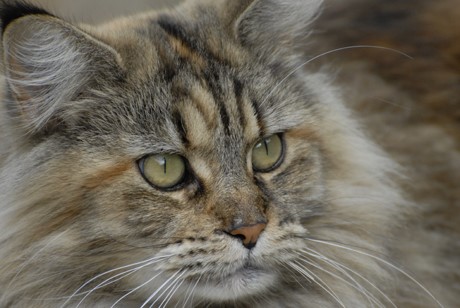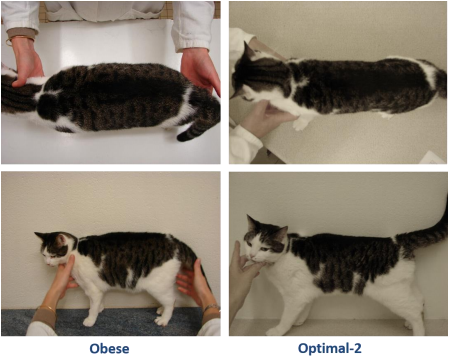Weight management in client-owned cats fed a high protein – low carbohydrate maintenance diet

Introduction
According to several studies worldwide, around 1 out of 2 cats are overweight or obese.1-2 Specific weight loss diets, formulated on a low energy - high fibre concept, are frequently poorly palatable and often perceived as too burdensome and too restrictive by pet owners, who thus simply give up on these diets.3 There is therefore a need for non-restrictive palatable diets which could help cats lose weight in a “softer way”.
Animals, materials and methods
During 8 weeks, 20 overweight adult neutered cats were given a new dry maintenance diet with a high protein and low carbohydrate content (Table 1). 0.5 to 1% weight loss per week was targeted. Individual daily rations were calculated each week, based on the energy requirement estimated at 0.8 x 0.8 x 60 x BW (BW: body weight being recorded weekly).4 A General Linear Mixed Model (factors: fixed (time), random (cat)) was used to test weight loss between weeks, with a 5% significance level.
Results
15 out of 20 cats completed the study. Despite the absence of rationing and the distribution of treats by most of the owners, 67% of these cats lost weight and 50% had a visibly slimmer silhouette. The effect of the diet was fast with a significant weight loss as soon as week 1, and a mean weight loss of 1.2% per week (Fig. 1 & Table 2). 80% of cats appreciated the tested diet according to their owners, and 73% of pet owners were ready to buy this diet or would recommend it to friends.
Conclusions
This new high protein – low carbohydrate maintenance diet resulted in a gradual weight loss. This “soft” way to lose weight and the good palatability, which may be due to the high animal protein content4,5, are probably the key points that can explain the good satisfaction rate among owners regarding the tested diet.
References: 1) APOP. National pet obesity awareness day survey 2012 ; 2) Courcier EA et al. J Fel Med Surg 2010 ; 3) Bissot T et al. J Fel Med Surg 2012 ; 4) FEDIAF Nutritional Guidelines for complete and complementary pet foods for cats and dogs 2013 ; 5) Zoran D. JAVMA 2002 ; 6) MacDonald M & Roger Q. Ann Rev Nutr 1984


